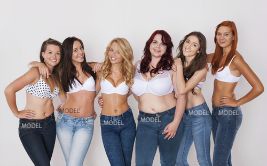5 Things You Should Know About Sun Protection
 In honor of May as skin cancer awareness month, here is a list of important things to know about sun protection. Take a look at what you are using daily as well as what you use for a beach or park outing and compare it to the list below. How does your sun protection measure up?
In honor of May as skin cancer awareness month, here is a list of important things to know about sun protection. Take a look at what you are using daily as well as what you use for a beach or park outing and compare it to the list below. How does your sun protection measure up?
1. Know the difference between sun blocksand sunscreens.
Sunscreens are classified in two types: chemical and physical. Chemical sunscreens contain ingredients that act as filters and reduce UV radiation penetration to the skin. Physical sunscreens, or sun blocks, are products containing titanium dioxide or zinc oxide which physically block UV radiation by creating a barrier that reflect UV light AWAY from the skin.
2. Make sure you are using broad-spectrum sun protection.
Broad-spectrum sunscreen means protection from both UVA and UVB rays. UVA rays are those that cause photo-aging and cancer. UVB rays are the rays that cause the skin to burn. The SPF number only refers to the UVB protection. To avoid the harmful long-term effects of UVA rays, look for broad spectrum.
3. REALLY know what SPF means.
S.P.F. stands for Sun Protection Factor. It refers to a product’s ability to protect your skin from burning. If your skin would normally burn after 10 minutes in the sun, for example, wearing an SPF 30 sunscreen like IMAGE Daily Defense Universal Moisturizer would theoretically allow you to stay in the sun for 300 minutes (10x30) without burning. Yes, that means you should be re-applying about every 2 hours to prevent a burn.
4. Higher SPF does not mean more protection.
Based on the above formula, a 100 SPF would mean you could be in the sun for 1000 minutes without burning, right? WRONG. First of all, sunscreen users generally apply far less than the recommended amount of product for full protection. Secondly, the SPF number also has a UVB absorption rate that is often misunderstood. For example, an SPF 15 absorbs 93.3% of UVB rays while an SPF 30 absorbs 96.7% of UVB rays. So, just because the SPF number doubled, does not mean that the amount of protection doubled.
5. The key to great sun protection is in the application.
To get the best out of your sun protection, apply 15-30 minutes before going outside to give it a chance to start working. Be sure to apply your sun protection generously and reapply every 2 hours or more often if sweating or swimming. Read the bottle for the recommended amount, but it usually calls for 1 ounce for your entire body. The amount is very important. A recent study found that applying half of the recommended amount of SPF 50 sunscreen only provided an SPF 7 protection! Be sure to cover all exposed skin including the ears, nose, and neck and do not rub it in. Appropriate application calls for you to let it soak in for best results.
If you are in the market for a new form of sun protection, come into GLOW Skin Revived. We have several different broad-spectrum sun blocks by IMAGE Skincare for all skin types or click here to see a few of the products.



